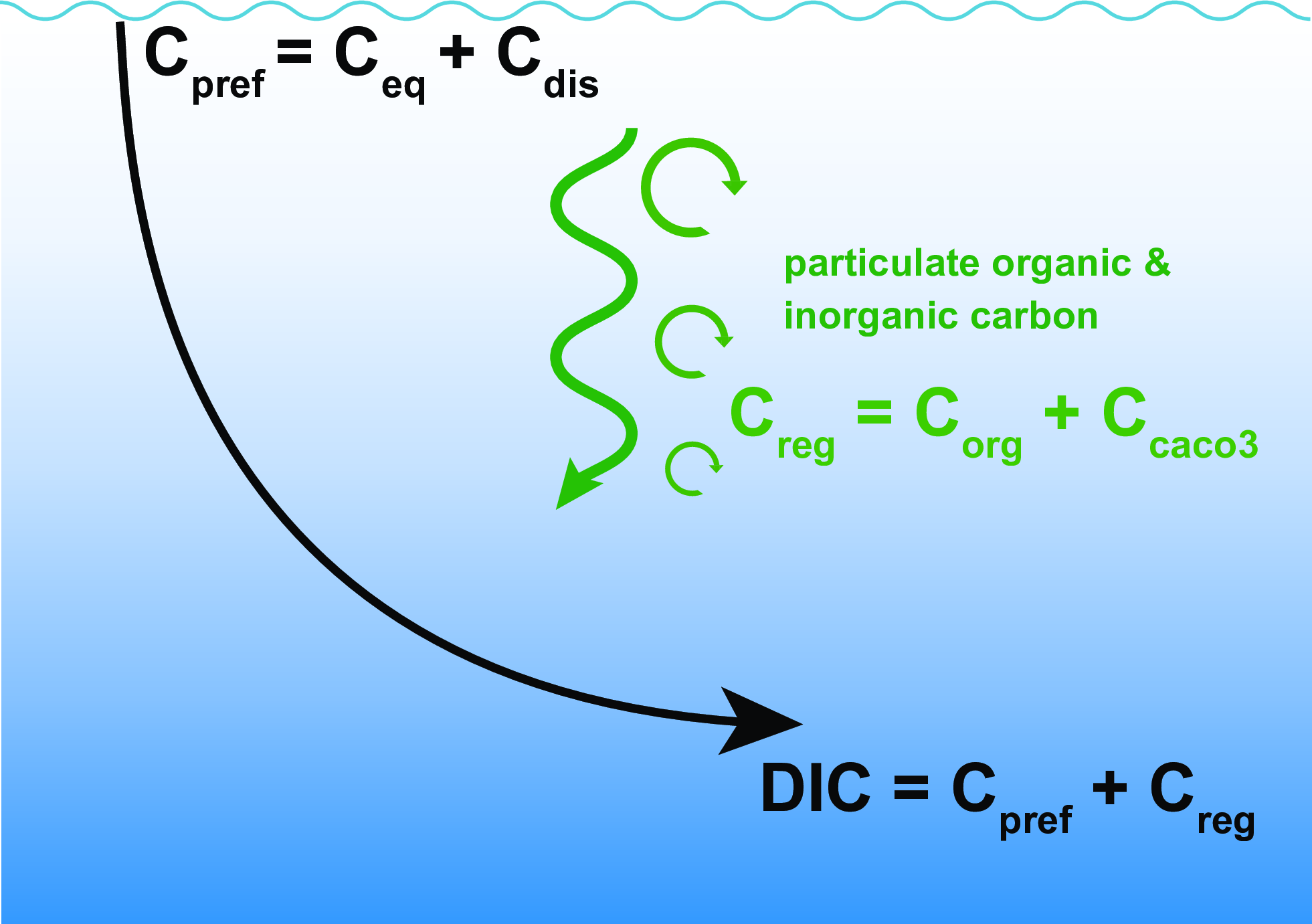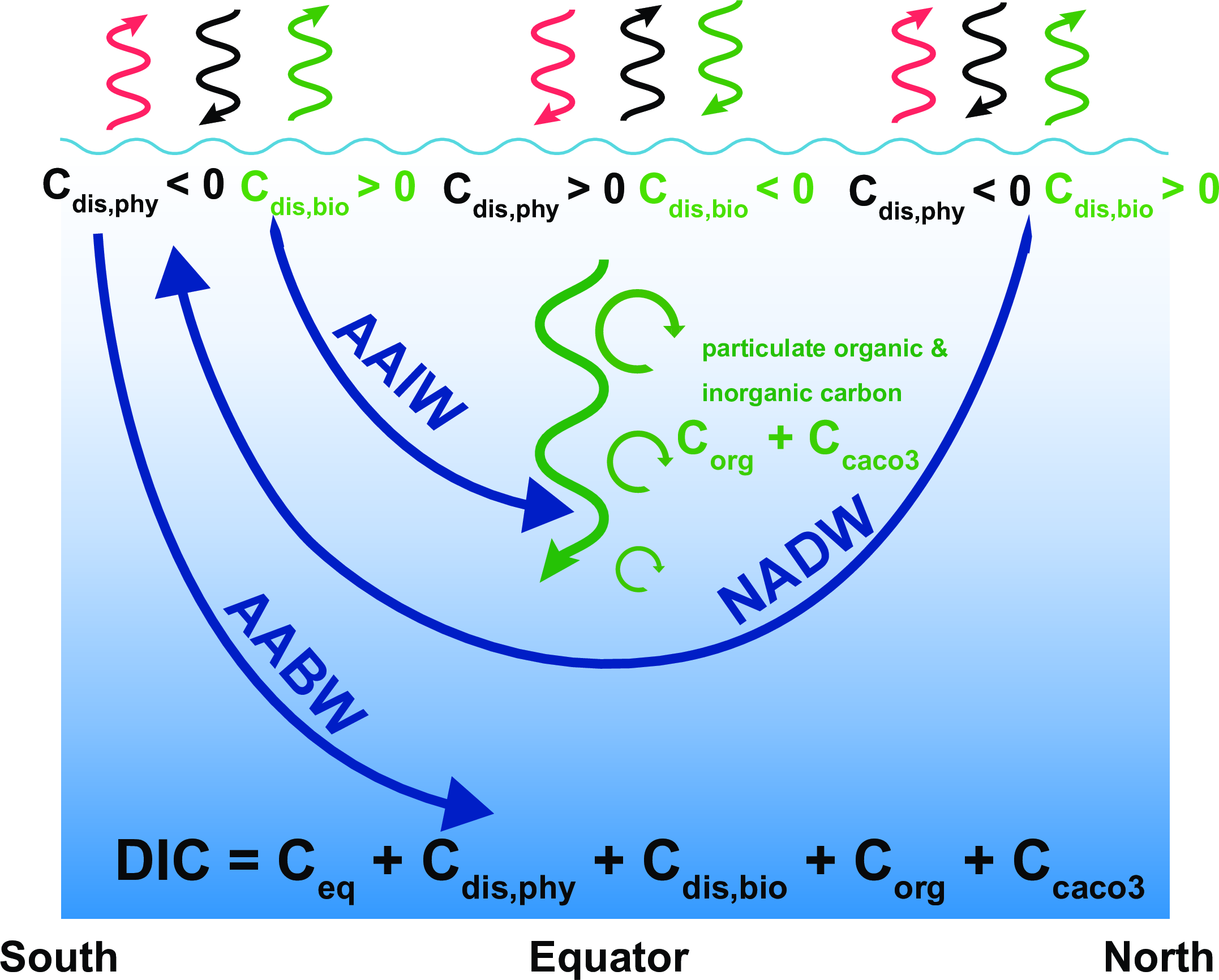Related Links
Description
The ocean's carbon cycle is an important part of Earth's climate system because it impacts the concentration of atmospheric carbon dioxide (CO2), which is a greenhouse gas. However, carbon cycling in the ocean is currently not well understood in part because it is influenced by different complex physical, chemical and biological processes. This complicates quantification of changes in ocean carbon storage such as those between the contemporary ocean and that of the Last Glacial Maximum (LGM, ~21,000 years ago) and hinders mechanistic understanding of the reasons for such changes. Previous studies have suggested several explanations for the lower atmospheric CO2 concentrations during the LGM including, increased sea ice cover, more sluggish deep ocean circulation, cooler temperatures and increased dust-borne iron fluxes that fertilized phytoplankton growth. This project will provide a novel data-constrained quantification of these processes based on the method of Khatiwala et al. (2019), which will improve our mechanistic understanding of past changes, and may improve understanding of possible future projections. A graduate student will be trained in oceanography, biogeochemical and physical modeling. This is a project that is jointly funded by the National Science Foundation's Directorate of Geosciences (NSF/GEO) and the National Environment Research Council (NERC) of the United Kingdom (UK) via the NSF/GEO-NERC Lead Agency Agreement.


Schematic of Ocean Carbon Decompositon. Left: Dissolved Inorganic Carbon (DIC) in the ocean interior arises from transport of preformed DIC from the surface plus regenerated biological carbon. Right: Preformed carbon is further separated into equilibrium and disequilibrium compontents with biological and phyiscal components. From Khatiwala et al. (2019).
Modern observations and paleoclimate data provide a wealth of information on changes to the carbon cycle. These data including carbon and nitrogen isotopes from glacial sediments will be used to constrain process-based models of the modern and LGM ocean. A newly developed method will be applied that provides a precise and complete decomposition of dissolved inorganic carbon storage into preformed and biologically-regenerated components. Preformed carbon is further separated into saturation and disequilibrium components, each of which has physical and biological contributions. Perturbation experiments will be used in which one variable (temperature, sea ice, circulation, soluble iron fluxes) is changed at a time and the carbon decomposition is applied. Uncertainties in circulation, mixing, and biogeochemistry will be considered. Protactinium thorium ratios (Pa/Th) will be implemented in the model and compared with modern and glacial sediment data, which will provide additional constraints on ocean circulation. Effects of ocean circulation changes on the different carbon components will be investigated. The decomposition will be extended to dissolved oxygen and carbon isotopes (δ13C). Hypotheses regarding modern and glacial ocean carbon storage will be tested.
Funded by
the National Science Foundation's Chemical Oceanography and Marine Geology and Geophysics Programs
Outreach
The project will support underrepresented students through more than 25 afterschool Science Technology Engineering and Mathematics clubs in rural Oregon middle and high schools. This will be achieved by working with teachers to develop and implement a carbon cycle and climate science curriculum into their programs as part of OSU's Science and Math Investigative Lerning Experiences (SMILE) program.
Publications
Impact of Atlantic Meridional Overturning Circulation Collapse on Carbon-13 Components in the Ocean
Variable Stoichiometry Effects on Glacial/Interglacial Ocean Model Biogeochemical Cycles and Carbon Storage
Carbon and Carbon-13 in the Preindustrial and Glacial Ocean
Carbon Isotope Constraints on Glacial Atlantic Meridional Overturning: Strength vs Depth
Glacial deep ocean deoxygenation driven by biologically mediated air–sea disequilibrium
Air-sea disequilibrium enhances ocean carbon storage during glacial periods
Presentations
Meridional Overturning and Mixing in the Glacial Ocean
Temperature and Iron Fertilization Dominate Glacial-Interglacial CO2 Changes
Reports
Modeling Effects of AMOC Variations on Carbon Components
Reconstructing Atlantic Meridional Overturning Circulation during Heinrich Stadial 1 using carbon isotopes
Data
Preindustrial (PI) and Last Glacial Maximum (LGM) Simulations with UVic2.9.10 (MOBI2.2) Output Data [Data set] In PLOS Climate (Vol. 3, Number 7, p. e0000434).
A global synthesis of high-resolution stable isotope data from benthic foraminifera of the last deglaciation (1.1) [Data set]
People
- Andreas Schmittner, Principle Investigator
- Samar Khatiwala, Co-PI
- Juan Muglia, Collaborator
- Jay Well, SMILE
- Ellen Cliff, Graduate Student
- Nathaniel Fillman, Graduate Student
- Matthew Bolin, Undergraduate Student
- Elijah Stahr, Undergraduate Student